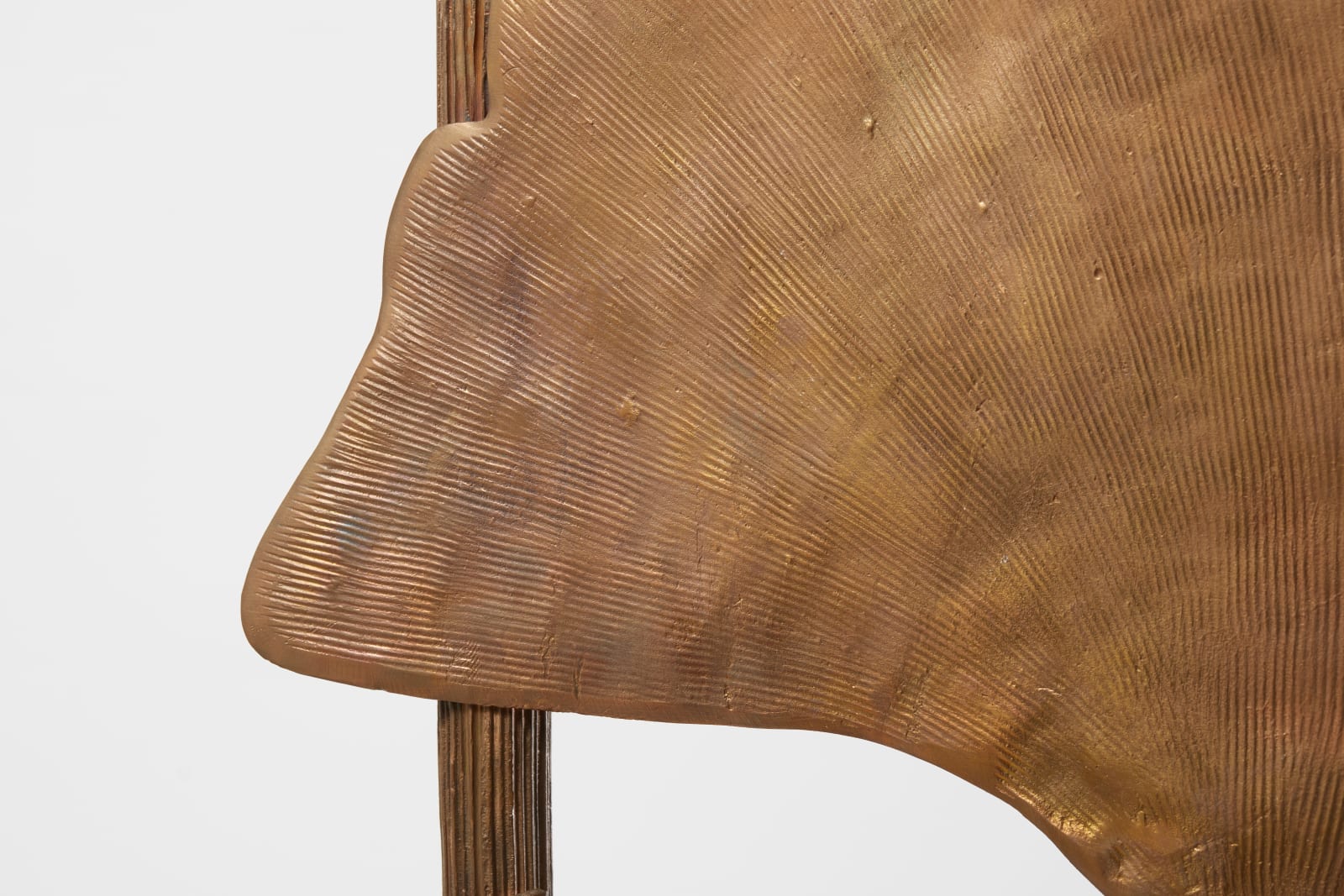 Photographer: Tom Carter
Photographer: Tom Carter
 Photographer: Tom Carter
Photographer: Tom Carter
Claude Lalanne French, 1925-2019
Trône de Pauline, 1990/2004
Bronze
199.5 x 104 x 85 cm. (78 1/2 x 41 x 33 1/2 in.)
Edition of 8 + 4 AP (#8/8)
Copyright The Artist
Claude Lalanne's furniture occupies a space between functionality and decoration. Her Trône de Pauline (1990/2004), a bronze throne adorned with one of her most enduring motifs – the ginkgo leaf...
Claude Lalanne's furniture occupies a space between functionality and decoration. Her Trône de Pauline (1990/2004), a bronze throne adorned with one of her most enduring motifs – the ginkgo leaf – stands at over five feet tall. The piece takes its name from Pauline Karpidas, a collector and arts patron who inspired the original design.
The ginkgo biloba, with its distinctive fan-shaped leaves, is an ancient species symbolising endurance and longevity, a reflection of its prehistoric origins. Although native to East Asia, the ginkgo tree held a deeply personal significance for Lalanne, who grew one in the garden of her home in Ury, France. This direct connection to the plant infuses her ginkgo-inspired furniture with arare sensitivity to the natural world’s intricate forms. Lalanne renders the leaves of Trône de Pauline in exquisite detail, their sinuous edges and undulating surfaces reflecting her meticulous attention to the nuances of organic form.
Trône de Pauline exemplifies Lalanne’s alchemical ability to translate the transience of nature into sculptural permanence. In this work, the solid bronze is made to feel lyrical and tactile, blurring the lines between art object and functional design.
The ginkgo biloba, with its distinctive fan-shaped leaves, is an ancient species symbolising endurance and longevity, a reflection of its prehistoric origins. Although native to East Asia, the ginkgo tree held a deeply personal significance for Lalanne, who grew one in the garden of her home in Ury, France. This direct connection to the plant infuses her ginkgo-inspired furniture with arare sensitivity to the natural world’s intricate forms. Lalanne renders the leaves of Trône de Pauline in exquisite detail, their sinuous edges and undulating surfaces reflecting her meticulous attention to the nuances of organic form.
Trône de Pauline exemplifies Lalanne’s alchemical ability to translate the transience of nature into sculptural permanence. In this work, the solid bronze is made to feel lyrical and tactile, blurring the lines between art object and functional design.
1
of
3

